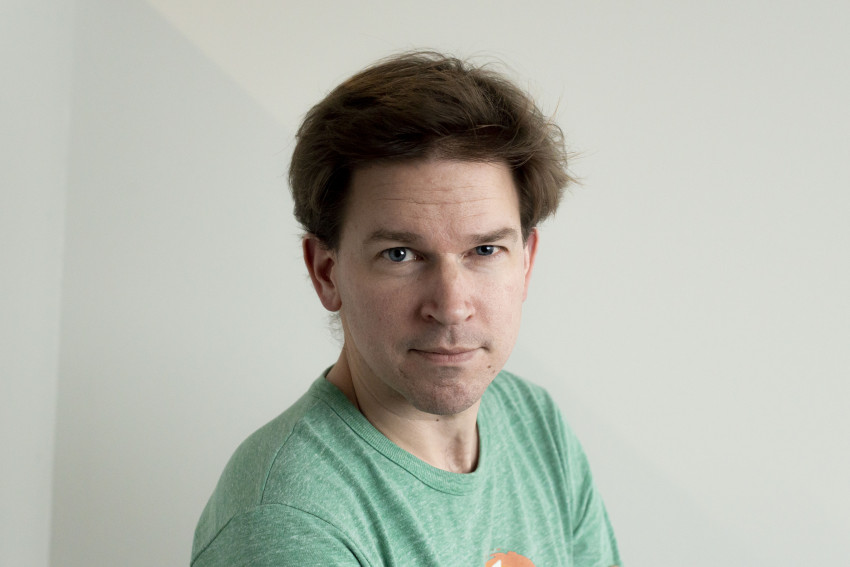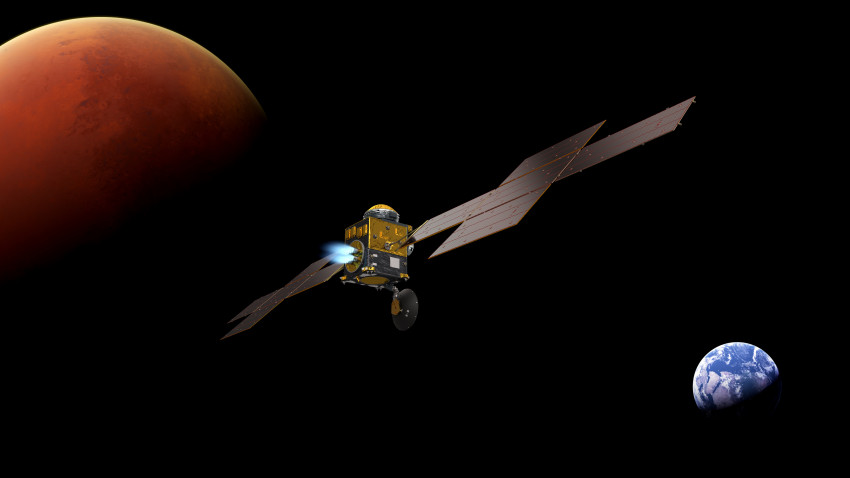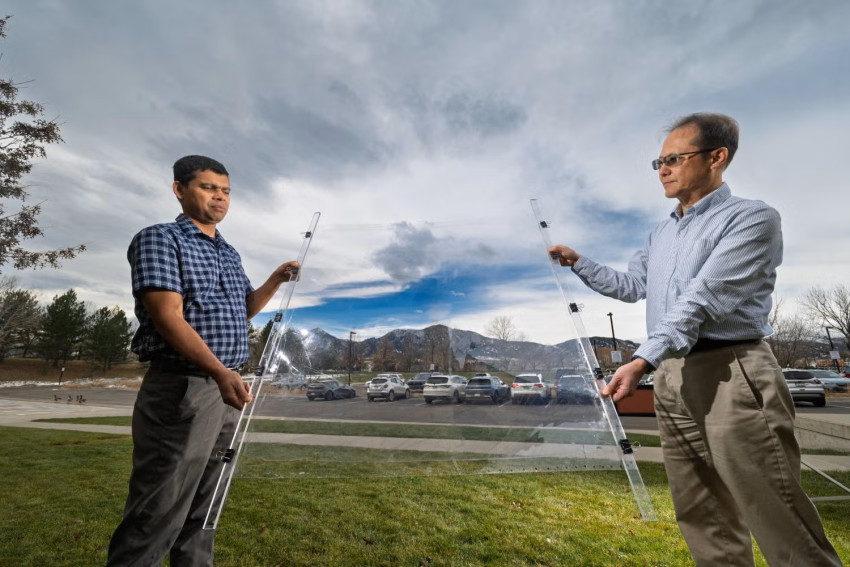
New Amsterdam metro line drives fully automatically from station to station
The brand new North/South metro line in Amsterdam has been designed to enable the metro trains to be automatically driven. The driver simply presses the start button, and the operating system determines how quickly to accelerate and to brake again on approaching the next stop. Yet there will still be a person in control for now.
Our website features a double piece about the North/South line, which is to be officially opened on 22 July. This article describes the new operating system, while the other discusses how the project was plagued by internal conflicts and subsiding houses before finally being completed. Read The drill must go on.
'Our system can cater for a train every 90 seconds.' At the head office of Alstom Netherlands in Utrecht, engineers Ronald Doeleman, Wim van Spronsen and Richard Mooij are pleased to boast a little about the safety and operating system they've created for the new North/South line. Not that Amsterdam is the first of its type. 'We've already used it in around 40 cities all over the world.' However, it needed to be tailored to the Amsterdam situation, which makes it unique after all.'
It's not the length of the line that makes it unique, but rather its complexity: trains can switch from one tunnel tube to the other, carriages are coupled and uncoupled, trains must wait for each others' passengers to switch, heavy doors can be lowered along the route to serve as a flood defence, etc. etc. 'The programme of requirements really is quite extensive.'
Communicating trains
The system now applied works differently to the current metro in Amsterdam. That is based on the use of track sections: if a section is occupied, then the signal is red. If it is free, then there is room for the next train. Furthermore, the driver is free to determine the train's acceleration, the speed he drives and how quickly he brakes at the next stop, before opening the doors to allow passengers in and out. However, the driver's autonomy does have its limits: if he ignores or fails to see a red signal, or exceeds the maximum speed, the automatic train safety system springs into action.
The Alstom system is based on the real-time location of the trains. 'They transmit their positions radiographically to the central computer once every 0.6 seconds. In turn, the computer calculates the maximum speed of the train to keep it at a safe distance from the one in front of it.'
The system does not work with signals along the track, but rather transmits information via the driver's display, who is informed that 70 km/h is the permissible speed, for example. On approaching a stationary train, the permissible speed is gradually reduced. 'The system is based on communication by the trains with the central computer, hence the name Communications Based Train Control.'

The role played by the driver has also changed. He no longer needs to be alert to red or green signals, but instead must adhere to the maximum speed at any time. If he fails to do so, the train safety system will cut in. However, the driver still decides how quickly to accelerate, drive and brake.
Not everything at once
The new system, which is unique for metro and light rail in the Netherlands, can also drive completely autonomously between stations. The driver then still opens and closes the doors, but as soon as he presses the start button, the operating system takes full control of the train until the next stop. 'We can assign various profiles to the driving style. For example 'drive as quickly as possible to the next stop'. Or 'drive as economically as possible'. The train is then assigned an extra minute, so that it accelerates more gradually and the carriage does not reach maximum speed.'
Hereunder you can watch the Alstom video on Communication Based Train Control.
However, the Amsterdam GVB municipal transport company has opted to leave the driving to the drivers where possible. 'In case of a malfunction or emergency situation, he or she must be able to operate the train safely.' After all, if the communication-based system fails, despite it being doubly safeguarded, we then still have a traditional track section system as a fallback option.
Access doors on the platform
Moreover, the system is not fully prepared for completely autonomous operation, from a safety point of view. 'That's only possible if we can guarantee that no one can get onto the track, because our system does not feature obstacle detection.' That would require access doors on the platforms. 'They open once the train has arrived, so that passengers can only move between the carriages and the platform.' Such systems are already operated elsewhere in the world – within Europe on a Parisian metro line and in the Swiss city of Lausanne.

The Amsterdam transport company does not see the merit of such an access system on the platform as yet. 'That would require another considerable investment, along with all the inherent technical challenges,' says Michiel Jonker, spokesperson for the city council. 'Plus you can't have everything at once. The new operating system, which will also be used for the existing metro lines in the future, is already a major step.'
If you found this article interesting, subscribe for free to our weekly newsletter!
The North/South line
The metro line from the other side of the IJ river to the Zuidas area is 9.7 km long in total. The 7.1 km underground stretch is a combination of two drilled tunnels (each more than 3 km long) and deep-lying stations up to 26.5 metres under street level. The tunnel tube runs under the Central Station and passes close to the Beurs van Berlage, Bijenkorf, Madame Tussauds and Munt tower buildings. The original schedule was to have completed the project in 2008, at a budget of 1.4 billion euros. In the end, that became 2018, to the tune of 3.1 billion euros.






